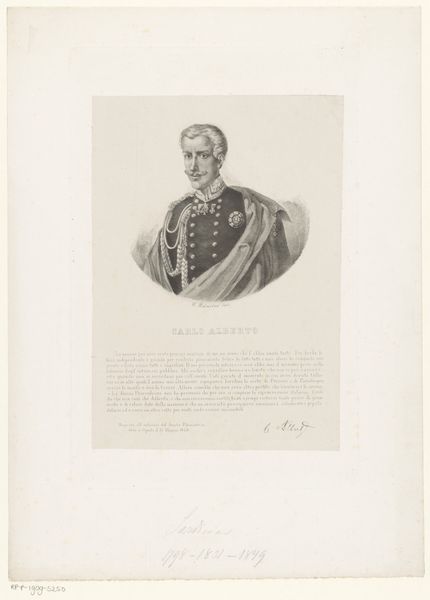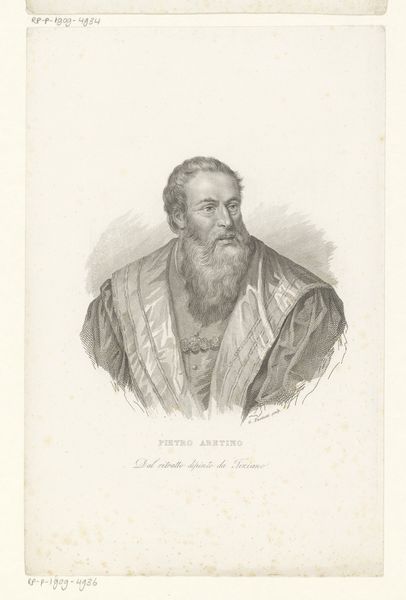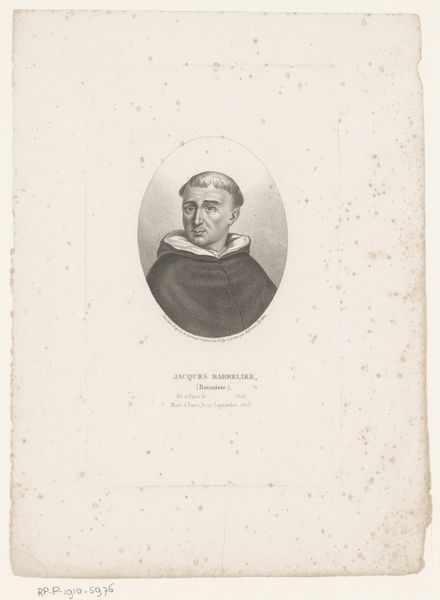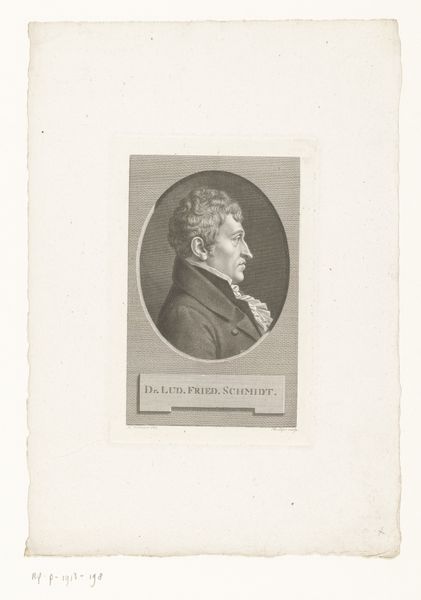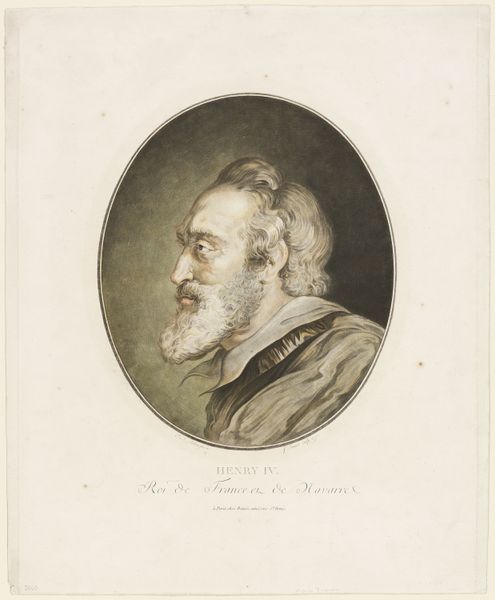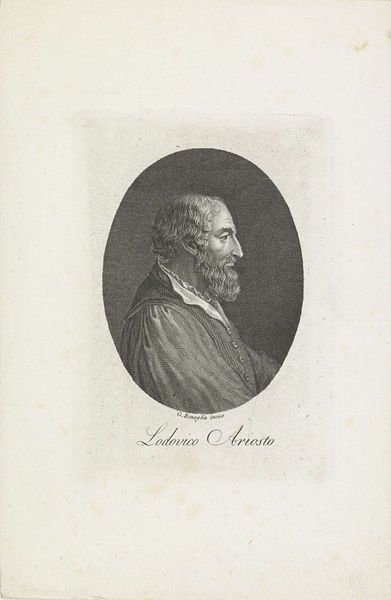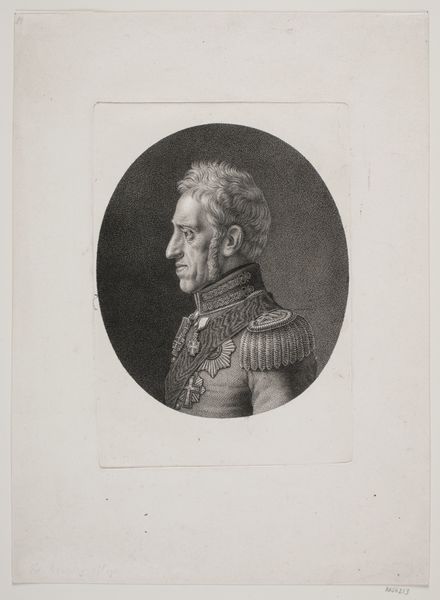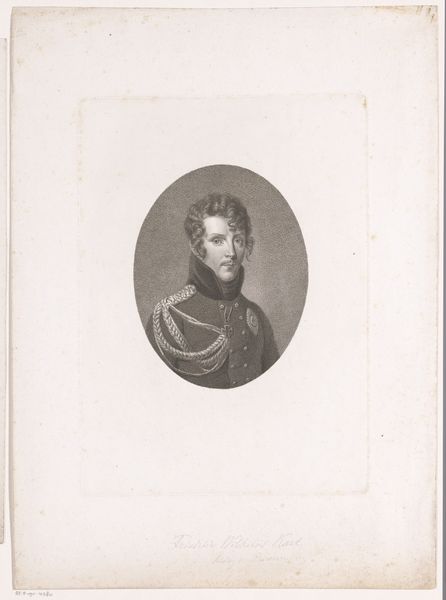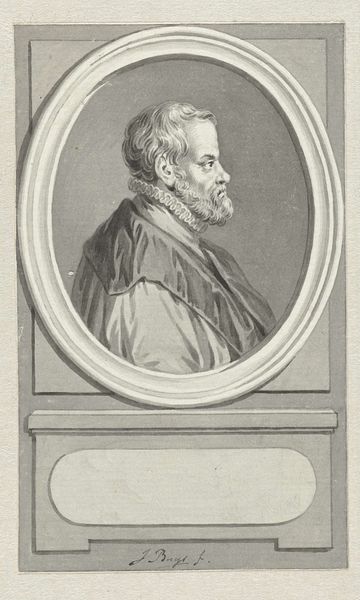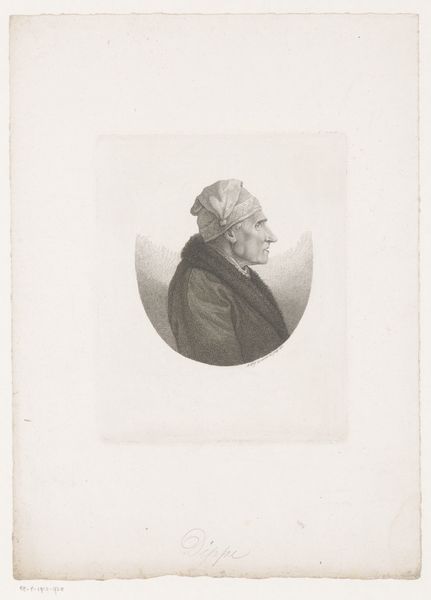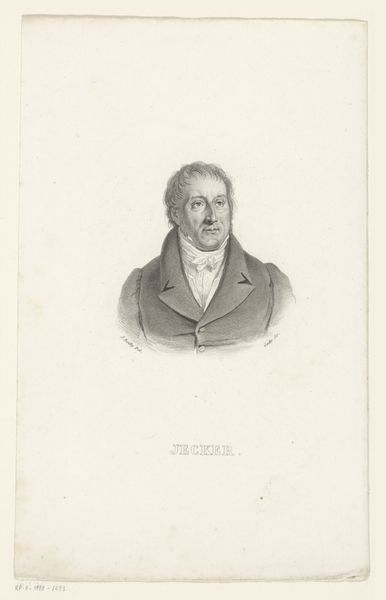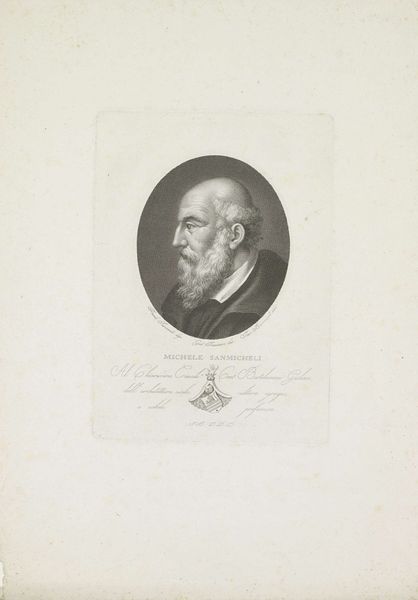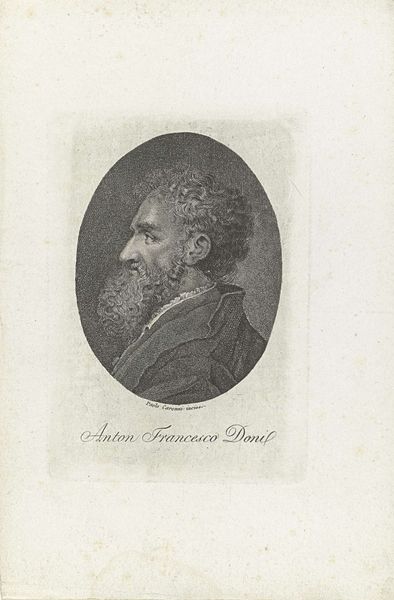
print, engraving
#
portrait
# print
#
history-painting
#
academic-art
#
engraving
#
realism
Dimensions: height 145 mm, width 95 mm
Copyright: Rijks Museum: Open Domain
Curator: Let's take a look at this print held here at the Rijksmuseum, "Portret van dichter en toneelschrijver Annibale Caro." It was produced sometime between 1789 and 1842 by Paolo Caronni, a profile rendered with fine engraving. What's your immediate impression? Editor: Stark. Simple. Evokes a sense of classical stoicism, wouldn’t you say? The lines are so clean; it’s almost austere in its depiction. It's all in shades of gray, which sort of drains the passion out of the portrayal. I imagine Caro as being a lively personality—a poet, after all! Curator: Indeed. The printmaking process itself offers insight here. Engraving requires intense labor and precision, transforming a copper plate through meticulous cuts. Each line represents not only an artistic decision but hours of focused work. The limited tonal range speaks more to the limitations of the process rather than any desire to dampen the character, though there may well be constraints due to it being commissioned, official. Editor: That’s true, the labor is undeniable. It gives a texture that is more uniform but less dynamic, the light is more constrained as well.. And of course the decision to portray him in profile also constrains. It invites scrutiny, of course, making you concentrate on details. Curator: Absolutely, and profile portraits such as this, have strong historical roots, recalling the portraiture of antiquity. Considering Caronni worked during a period heavily influenced by academic art and a revived interest in realism, this is a strategic play to connect Caro with this legacy. We cannot help, of course, but place the subject into a longer set of cultural, political associations. Editor: The inscription just below the portrait spells out the name: Annibal Caro in beautiful flowing italics that softens the rigidity and classicism of the figure somewhat. Curator: In thinking about the material, the print wasn’t meant to be a precious object but to be disseminated widely to promote the memory and achievements of Annibale Caro to a wide public, the image would be replicated across multiple impressions and the image reproduced again. Editor: You know, even with its cool detachment, there's still something compelling in his gaze. I find my imagination wanting to jump across the years that divide us and ask him something profound about poetry! The act of translating a living breathing human into lines on paper makes one meditate on their legacy... What have we lost? What remains? Curator: Yes, thinking about those networks of production and the layers of context help us begin to comprehend our relationship to art, culture, and history. Editor: It is fascinating! The man is forever, captured and represented via the engraving; even when the paper the art is on deteriorates the man will remain represented, as are we representing him, still.
Comments
No comments
Be the first to comment and join the conversation on the ultimate creative platform.
